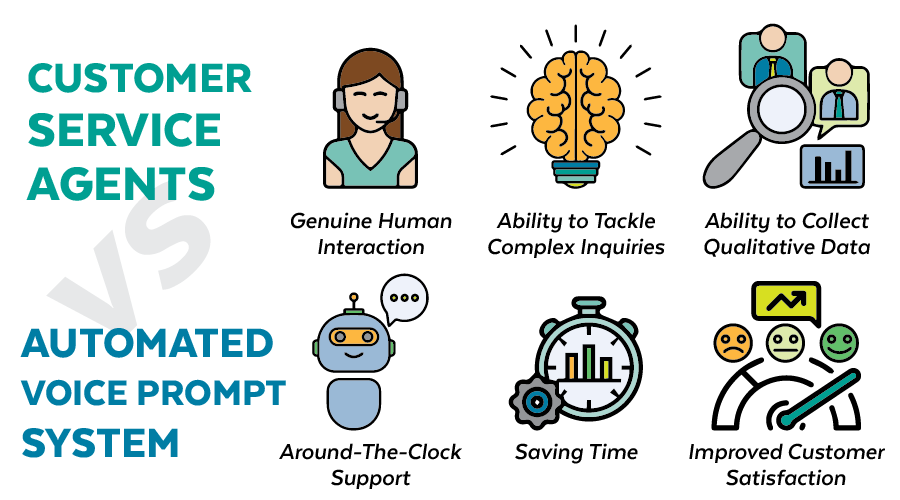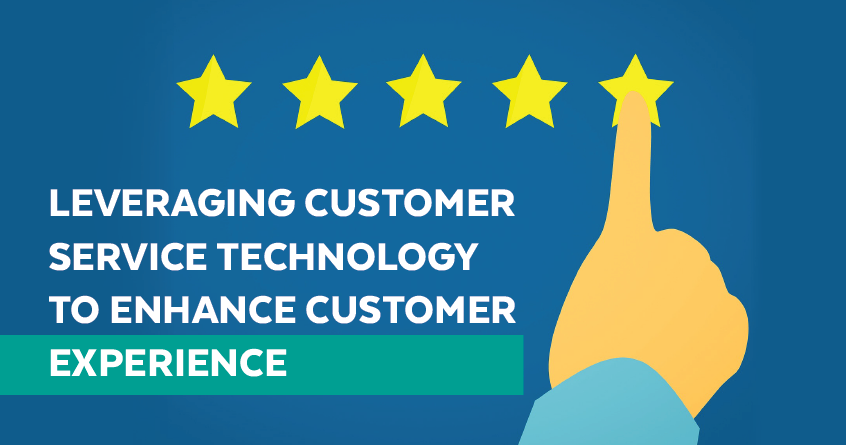Most customers expect high-quality service and reliable products from technology companies. Luckily, your business can comprehend and manage customer expectations by capturing data gathered through customer service technology and drawing insights from it. Furthermore, your IT network, website, and other customer-facing technologies are potential data collection machines, observing behavior patterns literally 24/7. Relying on data and other information lets your firm provide actionable analysis, solve problems, refine products and services, and make decisions that enhance customer experiences.
Let’s explore how you can leverage digital tools and customer data to improve customer service.
What Digital Tools Reveal About Customers

1. Purchasing Preferences
Your business can employ digital tools to harness various categories of data that reveal customer purchasing preferences. Digital tools like Google Analytics give you information about the actions of visitors on your company’s website. Using the software to track the most searched-for keywords enables your business to understand shifts in customer tastes.
2. Social Media Discussions
Social media platforms like Instagram and Twitter provide your business with valuable information concerning your products and services vis-à-vis your rivals. Customer engagement data can help you determine where your social media strategy can generate your desired ROI. You can track brand awareness on social media by gauging the number of links, mentions, or shares your business receives over a particular period.
Your enterprise can utilize social media discussions to measure social sentiment. Social sentiment analysis entails placing mentions on various platforms on a scale. Mentions that fall on the positive side of the scale show that social media users are having affirmative discussions about your products or services.
3. Repeat Interest
Repeat interest is vital to the success of your business because it often translates to lead conversion. The lead conversion rate for the B2B tech industry is approximately 1.7 percent. You can use web analytics tools to track visitors who are returning to your business’s website.
4. Satisfaction and Dissatisfaction During Interactions
Customer reviews in your website’s comment section can provide valuable insights into consumer satisfaction and dissatisfaction. Participating in discussions on online social networking platforms such as TikTok and Facebook enables you to understand and respond to customer complaints. You can use digital tools that track engagement data to determine which online forums have the highest user participation.
Customer Service Agents versus Automated Voice Prompt Systems
Your tech business must balance the value of human-provided customer service against automated voice prompt systems. Over-reliance on one approach versus the other can compromise customer service since each method has its pros and cons. You can use low-level automated response systems where feasible.
Customer Service Agents
Customer service agents require training in customer service. You can outsource training to customer service providers.
Here are the benefits of customer service agents:
1. Genuine Human Interaction
Customers crave authentic human interaction and expect customer service agents to understand their frustrations. Humans can also discern emotional cues, diffuse, acknowledge and empathize with different situations and tweak their responses accordingly.
2. Ability to Tackle Complex Inquiries
Multifaceted issues require human intuition, analysis, and critical thinking. Human agents are well-equipped to handle sophisticated matters because they can gauge a customer’s tone in real-time.
3. Ability to Collect Qualitative Data
Qualitative data includes non-quantifiables such as gender and preferences. Customer service agents can collect qualitative data to solve problems and enhance the customer’s overall experience.
Automated Voice Prompt Systems
Automated voice prompt systems complement customer service agents. In emotionally charged interactions, customer service agents can depend on real-time insights generated by voice analytics to establish client sentiment and trending matters. In such interactions, automated voice prompt systems can simultaneously tackle those rudimentary, time-consuming tasks that would typically impede an agent’s ability to resolve the problem at hand.
Automated voice prompt systems utilize artificial intelligence to automate complex queries. Machine learning, NLP, and conversational artificial intelligence enable the systems to comprehend user inputs better, give rapid responses, retrieve pertinent information, and execute required tasks.
Here are some advantages of automated voice prompt systems:
1. Around-The-Clock Support
Automated voice prompt systems offer 24/7 support, irrespective of the client’s time zone, location, or circumstances. Unlike customer service personnel, the tools aren’t limited by your firm’s opening or closing hours and resolve simple matters presented by clients without needing customer service agents to intervene. Automated systems free up customer service agents to address more complex issues.
2. Saving Time
Automated voice prompt systems boost customer service efficiency by enabling your business to tackle more queries over a particular period. The systems rapidly execute challenging functions in a shorter time than humans. Human agents can use the saved time to deal with sophisticated user queries and handle strategic tasks.
Automation saves the customer’s time and gives them a positive user experience by providing accurate answers swiftly.
3. Improved Customer Satisfaction
Automated voice prompt systems contribute to increased client satisfaction thanks to their consistent support on multiple touch points, quicker response times, and shorter problem resolution time.
4. Scalability
Automated voice prompt systems enable your business to provide individualized, omnichannel customer service. These systems simplify learning, testing, and measuring, allowing you to continually optimize customer service experiences.

Rely on Data from Customer Service Technology
Harnessing the data in your network or website enables you to improve customer service. Data provides actionable analysis that helps your employees work smarter.
The Internet of Things (IoT) is a crucial digital tool your business can employ in gathering customer data. The data allows you to customize individual customer service experiences.
“If you think that the internet has changed your life, think again. The Internet of Things is about to change it all over again!” – Brendan O’Brien
You can also utilize various tools embedded in social media platforms to harness customer data. For instance, Facebook’s Audience Insights provides aggregated data, including demographic overviews, content preferences, and lifestyles concerning the site’s users. This data enables you to tailor customer service and improve user experiences on your website.
Employ Digital Tools to Enhance Customer Data Today!
PLANET is a provider of quality, cost-effective, and industry-efficient IT networking equipment. We offer PoE switches, injectors, extenders, and media converters that enable you to fully optimize your network infrastructure. Follow us on Facebook, Twitter, and YouTube.
